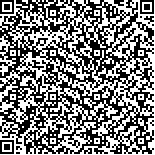| 摘要: |
| 本文以国内主要城市的城市建成环
境设计导则为研究对象,筛选出63篇设计导
则,利用NVivo 11软件进行文本主题分析总
结城市建成环境要素框架,继而利用WELL
健康社区标准作为评估参考进行文本评估
分析,探讨导则中的环境要素和对应策略是
否对公共健康具有支持作用。研究表明,国
内城市建成环境设计导则主要关注两个类别
的八大环境要素:软质要素(植物、水体、
地形),硬质要素(道路、铺装场地、建筑
及园林构筑、公共艺术和景观小品、城市
家具),其中包含37个子项、241个对应指
标。八个要素均能作为支持公共健康的载
体,可以通过营造利于健康的物理环境、促
进居民体力活动和改善居民的心理健康水平
三个角度来改善场所的环境要素以促进公共
健康。 |
| 关键词: 建成环境 公共健康 环境要素 设计导则 |
| DOI:10.13791/j.cnki.hsfwest.20220207 |
| 分类号: |
| 基金项目: |
|
| Research on Optimization Strategy of Urban Built Environment Elements Based onSupporting Public Health Orientation |
|
FANG Yongli,QUE Qingmin,GAO Wei
|
| Abstract: |
| The purpose of this paper is to summarize and explore the composition of
environmental elements and the strategies for organizing them to support public health at the
meso-micro scale through a qualitative textual analysis method based on the ways in which built
environment affects health, introducing the WELL Community Standard as a reference, and using
the existing design guidelines related to urban built environment in China as research material.
It aims to form a framework for cognition of sites and guiding practices from the perspective of
public health, and to provide references for the construction of healthy sites.
In the city selection and guideline collection, 15 cities were selected by national
administrative dimension, habitat construction dimension and economic development
dimension, and 63 guidelines were retrieved and compiled in this paper.
In the data analysis, firstly it used NVivo 11 software for textual theme analysis to
summarize the framework of urban built environment elements. Eight elements in two
categories were obtained: (plants, water bodies, and topography), and hard elements (roads,
paved sites, buildings and landscape structures, public art and landscape vignettes, and urban
furniture), which contain 37 sub-categories and 241 corresponding indicators. Following
that, the above framework of urban built environment elements, the guidelines in each design
guideline are evaluated and analyzed with the ten evaluation items in the WELL Community
Standard. The urban built environment elements and indicators that are related to the scoring
items of the WELL Community Standard were grouped together in the same way. The urban
built environment elements and reference strategies to support public health were obtained in
three areas: environmental elements and strategies to create a healthy physical environment,
environmental elements and strategies to promote physical activity of residents, and
environmental elements and strategies to improve the mental health of residents.
From the perspective of public health, each element can serve as a vehicle to support
public health. The creation of a health-friendly physical environment emphasizes the degree of
coverage of soft elements and the material characteristics of hard elements. Promoting physical
activity of residents can be effectively met by improving the walkability and readability
of the site and the accessibility of the facilities. Improving mental health can be achieved
by controlling the color patterns of hard and soft elements and the degree of permeability of the resulting spaces to provide a sense of security and stress relief. In future planning and design, it is necessary to consider the creation of
environmental elements with a human focus and develop special design guidelines for public health. |
| Key words: Landscape Architecture Built Environment Public Health Design Guidelines Site Elements Design Practices Qualitative Date Analysis |


